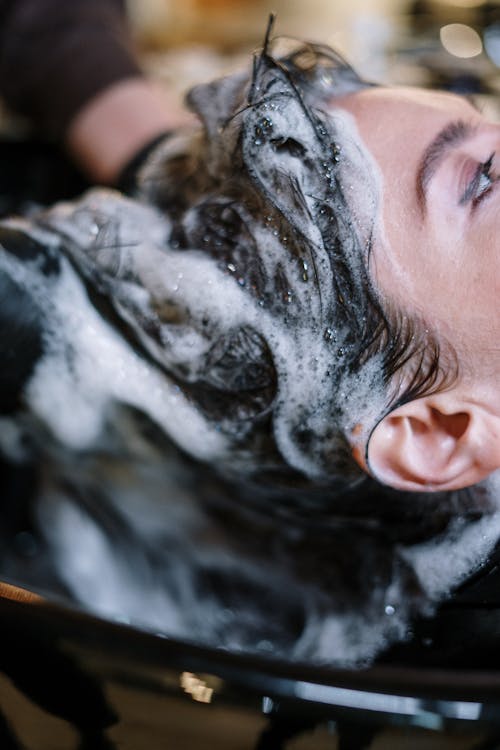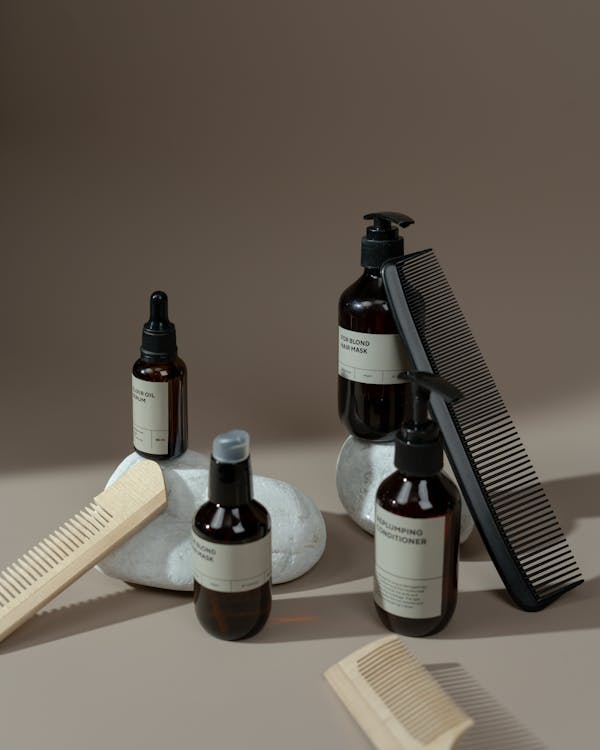How to Choose the Right Hair Products: A Comprehensive Guide
Choosing the right hair products can be overwhelming with the vast array of options available in the market today. Whether you're dealing with dryness, frizz, or lackluster locks, selecting the appropriate products can make a significant difference in the health and appearance of your hair. This guide will help you navigate through the myriad choices to find the best hair products for your specific needs.

Understanding Your Hair Type
The first step in choosing the right hair products is to understand your hair type. Hair types are generally categorized based on texture and porosity. Here’s a breakdown:
Hair Texture

- Straight Hair: This hair type tends to be shiny but can become oily and limp. It requires lightweight products that won't weigh it down.
- Wavy Hair: This type has a slight curl and can be prone to frizz. It benefits from products that enhance waves without making hair heavy.
- Curly Hair: Curly hair needs moisture and frizz control. Look for hydrating products that define curls.
- Coily Hair: This hair type is very curly and often dry. It requires rich, moisturizing products to maintain its health and definition.
Hair Porosity
Hair porosity refers to your hair's ability to absorb and retain moisture. It can be low, medium, or high:
- Low Porosity: Hair cuticles are tightly packed, making it difficult for moisture to penetrate. Look for lightweight, water-based products.
- Medium Porosity: Hair absorbs and retains moisture well. You can use a variety of products without issues.
- High Porosity: Hair cuticles have gaps, leading to moisture loss. Opt for heavier, moisturizing products that seal in hydration.
Identifying Your Hair Concerns
Beyond understanding your hair type, it's essential to identify your specific hair concerns. Common issues include:
- Dryness: Use moisturizing shampoos, conditioners, and leave-in treatments.
- Frizz: Anti-frizz serums and creams can help manage unruly hair.
- Thinning: Look for volumizing shampoos and conditioners, and consider treatments that promote hair growth.
- Dandruff: Use anti-dandruff shampoos and treatments to control flaking.
- Color-treated Hair: Opt for products designed to protect and extend the life of your hair color.
Key Ingredients to Look For

When choosing hair products, it's crucial to pay attention to the ingredients. Here are some beneficial ingredients to consider based on your hair needs:
Moisturizing Ingredients
- Argan Oil: Rich in fatty acids and vitamin E, argan oil hydrates and softens hair.
- Shea Butter: A natural moisturizer that helps to lock in moisture.
- Glycerin: Attracts moisture from the environment into your hair.
- Coconut Oil: Penetrates the hair shaft to provide deep hydration.
Strengthening Ingredients
- Keratin: A protein that helps strengthen and repair damaged hair.
- Biotin: A B vitamin that promotes hair growth and strength.
- Silk Proteins: Smooth and strengthen hair, reducing breakage.
Anti-Frizz Ingredients
- Silicones: Provide a barrier against humidity and reduce frizz.
- Polyquaterniums: Conditioning agents that help smooth the hair cuticle.
Scalp Health Ingredients
- Tea Tree Oil: Has antimicrobial properties that help maintain a healthy scalp.
- Salicylic Acid: Exfoliates the scalp to prevent dandruff and buildup.
Choosing Shampoos and Conditioners
Shampoo and conditioner are the foundation of any hair care routine. Here’s how to choose the right ones:
Shampoo
- For Dry Hair: Choose a hydrating shampoo with ingredients like argan oil or shea butter.
- For Oily Hair: Look for a clarifying shampoo that can remove excess oil without stripping your hair.
- For Curly Hair: Use a sulfate-free shampoo to avoid stripping natural oils.
- For Color-Treated Hair: Opt for a color-safe shampoo that protects and preserves your hair color.
Conditioner
- For Fine Hair: Use a lightweight conditioner that won't weigh down your hair.
- For Thick Hair: Choose a rich, creamy conditioner that provides ample moisture.
- For Damaged Hair: Look for a conditioner with strengthening ingredients like keratin or biotin.
- For Curly Hair: Use a leave-in conditioner for extra moisture and curl definition.
Styling Products

The right styling products can help you achieve the look you want while maintaining hair health. Here are some options based on different needs:
Heat Protection
If you use heat styling tools, a heat protectant is essential. Look for products that protect your hair up to at least 400°F.
Volumizers
For fine or thin hair, volumizing mousses and sprays can add body and lift without weighing your hair down.
Curl Enhancers
Curly and wavy hair can benefit from curl creams and gels that define and hold curls without making them crunchy.
Anti-Frizz Products
Serums, creams, and oils that tame frizz and smooth the hair cuticle are ideal for those with frizz-prone hair.
Hairsprays

Choose a flexible hold hairspray for a natural look or a strong hold hairspray for styles that need to stay in place all day.
Treatments and Masks
Incorporating treatments and masks into your hair care routine can address specific concerns and improve overall hair health. Here’s what to consider:
Deep Conditioning Masks
Use these once a week to provide intense hydration and repair. Look for masks with ingredients like coconut oil, shea butter, or argan oil.
Protein Treatments

If your hair is damaged or over-processed, protein treatments can help strengthen and repair it. Be cautious not to overuse them, as too much protein can make hair brittle.
Scalp Treatments
Healthy hair starts with a healthy scalp. Scalp treatments can address issues like dandruff, dryness, or excess oil. Ingredients like tea tree oil, salicylic acid, and peppermint oil can be beneficial.
Leave-in Treatments
Leave-in treatments provide ongoing benefits throughout the day. Look for products that offer UV protection, detangling, and additional moisture.
Reading Labels and Avoiding Harmful Ingredients
When choosing hair products, it's important to read labels carefully. Some ingredients can be harmful or cause buildup over time. Here’s what to watch out for:
Sulfates
While effective at cleaning, sulfates can strip hair of natural oils, leading to dryness and damage. Look for sulfate-free options, especially if you have dry or curly hair.
Parabens
Used as preservatives, parabens have been linked to potential health risks. Opt for paraben-free products to avoid these concerns.
Alcohols
Not all alcohols are bad for your hair, but some (like ethanol or isopropyl alcohol) can be very drying. Look for products that use fatty alcohols (like cetyl or stearyl alcohol), which can be conditioning.
Synthetic Fragrances
These can cause irritation or allergic reactions for some people. If you have a sensitive scalp, consider fragrance-free or naturally scented products.
Tailoring Your Hair Care Routine
Once you’ve selected the right products, it’s important to use them correctly to get the best results. Here are some tips for a tailored hair care routine:
Washing Frequency
- Dry Hair: Aim to wash your hair 1-2 times per week to avoid stripping natural oils.
- Oily Hair: You may need to wash your hair more frequently, such as every other day.
- Curly Hair: Once a week is usually sufficient, using a co-wash (conditioner wash) if needed between shampoos.
Application Techniques
- Shampoo: Focus on the scalp and roots, where oil and buildup are most common. Use your fingertips to gently massage the scalp.
- Conditioner: Apply primarily to the lengths and ends of your hair, where it needs the most moisture.
Styling and Protecting

- Heat Styling: Always use a heat protectant before blow-drying, curling, or straightening your hair.
- Air Drying: If possible, let your hair air dry to minimize heat damage.
- Brushing: Use a wide-tooth comb or a brush designed for wet hair to detangle, reducing breakage.
Regular Trims
To maintain healthy hair and prevent split ends, get regular trims every 6-8 weeks. This helps keep your hair looking fresh and prevents damage from traveling up the hair shaft.
Adapting to Seasonal Changes
Your hair care needs can change with the seasons. Here’s how to adjust your routine accordingly:
Winter
Cold, dry air can make hair more prone to dryness and static. Use more moisturizing products and consider wearing a hat to protect your hair from the elements.
Summer
Heat and humidity can lead to frizz and damage from UV rays. Use anti-frizz products and consider hair care products with UV protection.
Spring and Fall
These transitional seasons can affect your hair differently depending on the climate. Pay attention to your hair’s needs and adjust your routine as necessary.
Seeking Professional Advice
If you’re still unsure about the best products for your hair, consider seeking advice from a professional hairstylist. They can provide personalized recommendations based on your hair type, concerns, and goals.
Conclusion
Choosing the right hair products involves understanding your hair type, identifying your specific concerns, and selecting products with beneficial ingredients while avoiding harmful ones. By tailoring your hair care routine and adjusting to seasonal changes, you can maintain healthy, beautiful hair. Remember, what works for someone else might not work for you, so it may take some experimentation to find the perfect products for your hair. Investing the time to choose the right products will pay off in the form of healthier, more manageable hair.

 Cricket Score Counter
Cricket Score Counter Heads or Tails
Heads or Tails
You have not logged in, please Login to comment.